There is a new species: tarantula! Birupes simoroxigorum is pretty as a peacock. In fact, it is a peacock tarantula.

A PEACOCK TARANTULA? THEY’RE PRETTY AS A PEACOCK!
This new blue tarantula was found in the forests of Malaysia. (Birupes simoroxigorum) New species are amazing. To think that they may have been here all this time and we’ve only just found them? Even though my sister is cringing about a spider post, (she has one of those vacuum devices to safely remove them from her house) I had to investigate.
And I love the color blue! A blue tarantula! Animal pigments are amazing. For more about how rare the color blue is in nature and why I have a post here!
Blue tarantulas are more common than you’d expect. This is counter-intuitive because tarantulas don’t rely on their vision as much as other spiders.
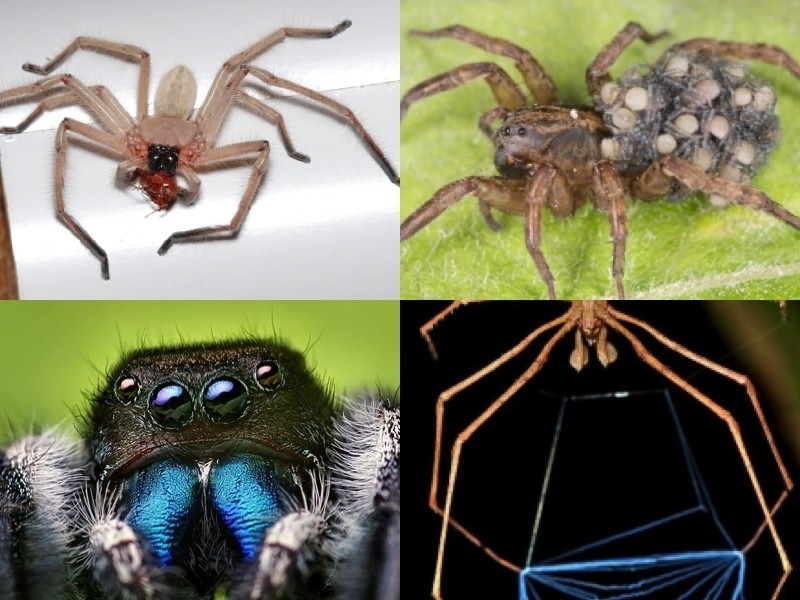
Many spiders do rely more on their eyes. Top left, the huntsman spider, seen with prey. The top right is the wolf spider pictured with spiderlings, and the bottom left, is the jumping spider, which sees in 3D. Bottom right, the gladiator spider hunts with a net.
ANIMAL PIGMENTS
Animals evolve their colors in different ways. Sometimes color is produced by the absorption of certain wavelengths of light by biological pigments. (biochromes) Animal pigments can give color to skin, eyes, feathers, fur, and hair. This isn’t just for looks. Pigments have a function.

Melanin is a yellow-black pigment in our skin that helps to protect it from sun damage. Melanin is technically an animal pigment since we are animals!
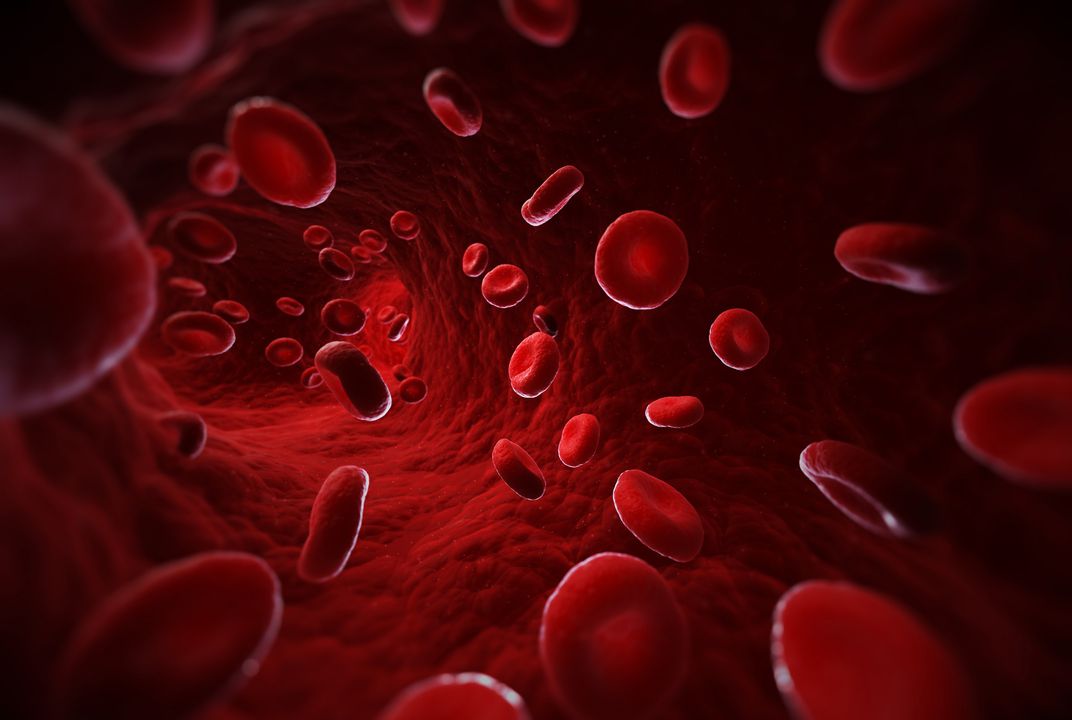
Hemoglobin is an animal pigment that enables blood cells to carry oxygen to our tissues.
Plants have pigments, too. Chlorophyll is a green pigment, for example, and serves a very important function for photosynthesis.

BIOLUMINESCENCE AS ANIMAL PIGMENT
Or coloration can occur because of light scattering from tiny photo nanostructures. Nanostructures produce color through various physical mechanisms including diffraction, coherent scattering, and interference. This type of color (a few examples below) is called structural or bioluminescence.
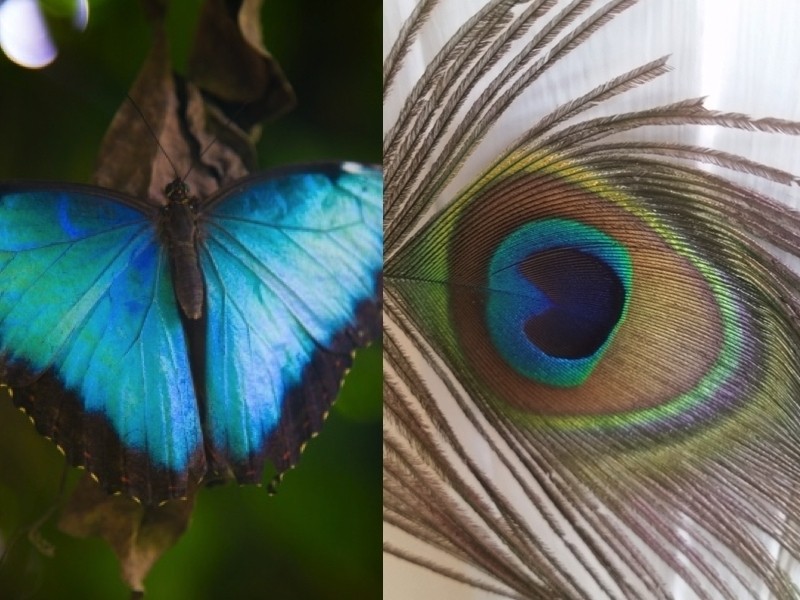
WHY ANIMAL PIGMENTS?
Why do animals have pigments? The reason behind these types of coloration changes can include camouflage, predation, signal communication, or attracting a mate.
But tarantulas such as this new species tarantula aka birupes simoroxigorum are largely nocturnal, ambush predators. Plus, they live in burrows. It’s dark at night (and underground) so you normally wouldn’t be able to see these colors. They don’t want to be spotted by their prey. And tarantulas have many enemies to worry about, too.
ANOTHER BLUE TARANTULA!
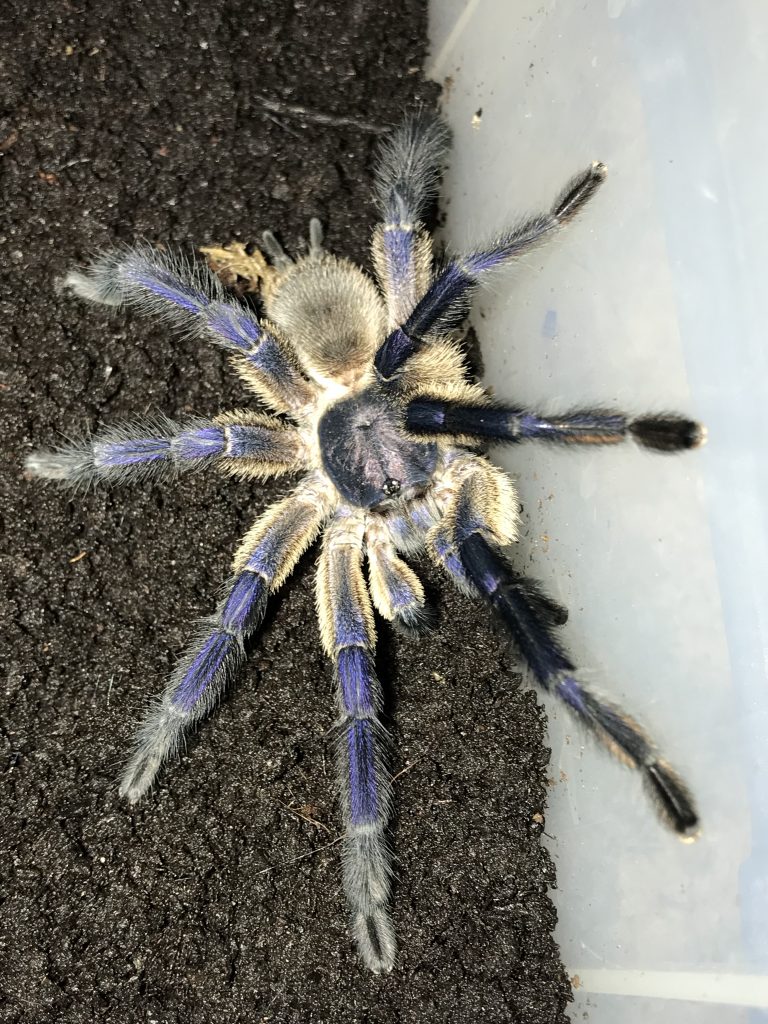
The peacock tarantula-worthy blue coloration is also an enigma because of the birupes simoroxigorums’ poor vision. Although tarantulas have eight eyes like all spiders, they only have a single type of photopigment which means low visual acuity.
Socotra Island Blue Baboon of Yemen (Monocentropus balfouri)
Then why do blue tarantulas need such bright blue, iridescent coloring?
There is no real consensus on this. One theory is that most of the tarantula’s enemies are evolved to see green, so blue acts as camouflage. But this backfires when it comes to most humans, who, like me, are attracted to beauty.
In fact, illegal tarantula collecting is a growing problem worldwide. The illegal tarantula trade is a little-known corner of the black market in wildlife.
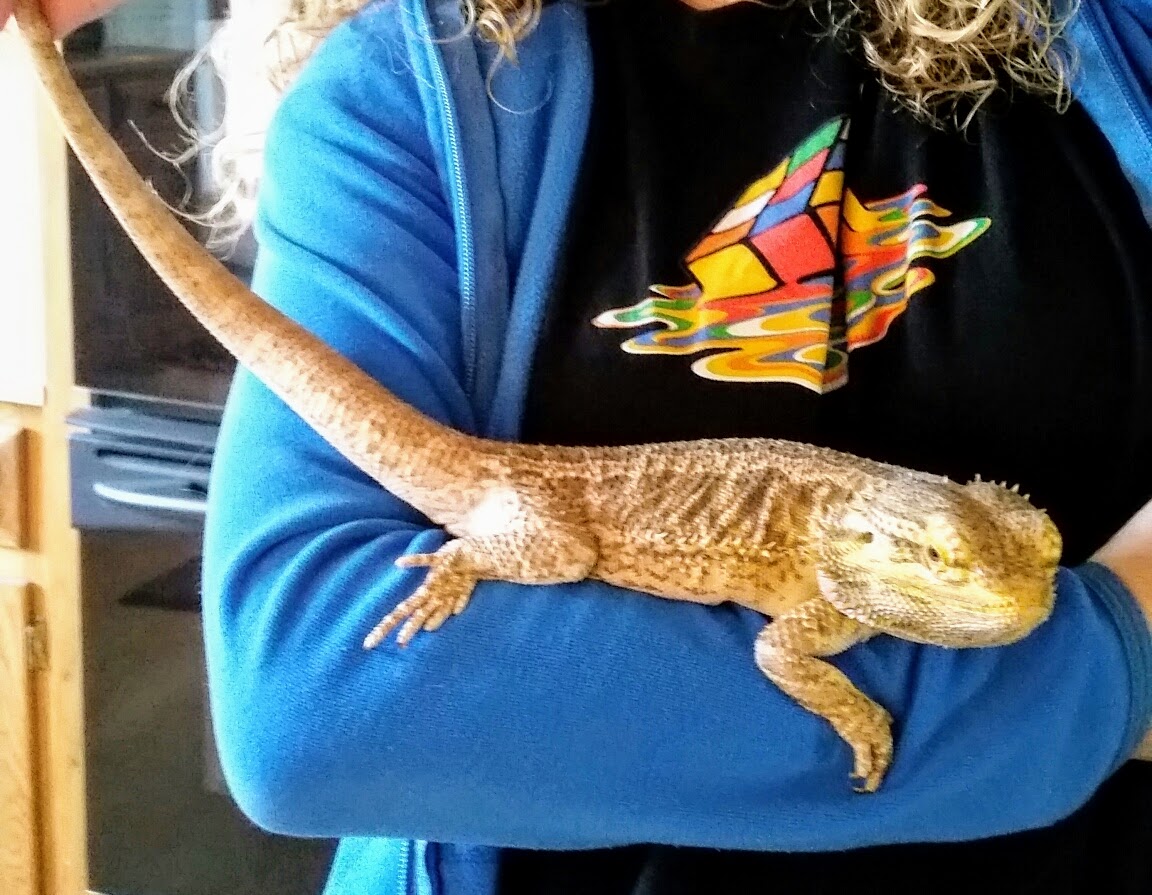
Don’t misunderstand….legal pets are great!
This is our bearded dragon, Ozzie. He is not blue, nor is he pretty as a peacock tarantula, but he loves blueberries. (And I an wearing a blue sweatshirt!)
Yet, illegal smuggling harms animal populations around the globe. Elephants and rhinos have been among the hardest hit, but smaller, more obscure animals are sought after too. Sometimes as pets, but also for use in traditional medicine, or to create jewelry and the like. Tarantulas are considered a delicacy in certain parts of the world.
PEACOCK TARANTULA ENDANGERED (poecilotheria metallica)
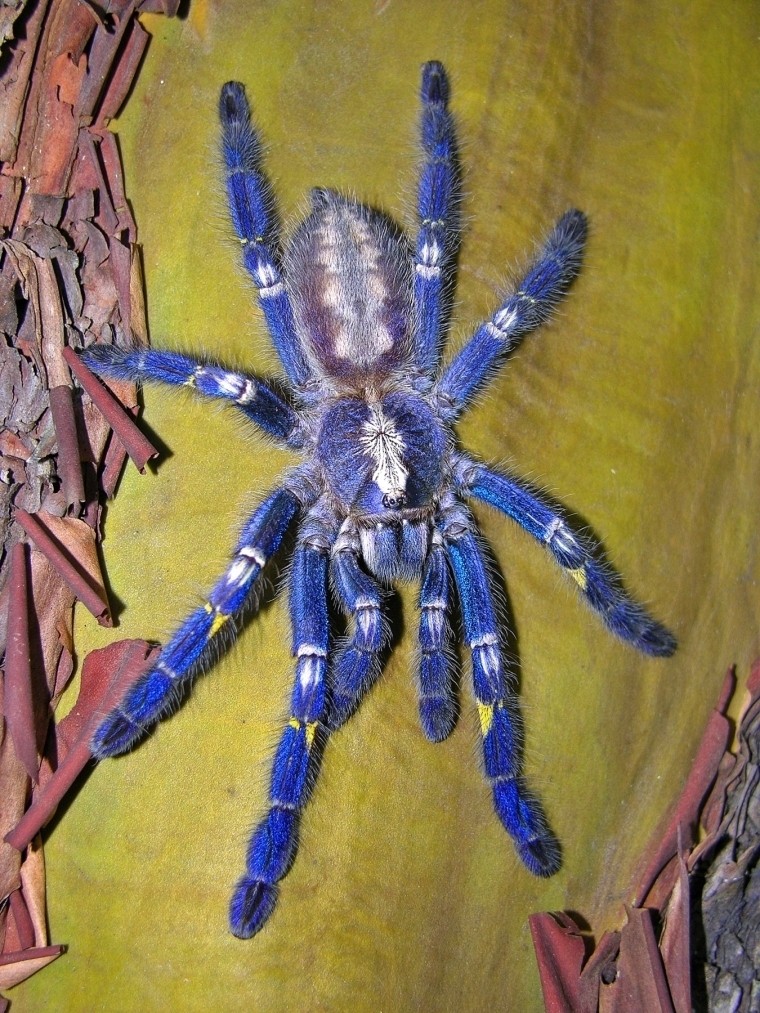
Endangered Peacock Tarantula of India (Poecilotheria metallica) This beauty is obviously a blue tarantula too!
People may not care about a new species of tarantula as much as elephants. Tarantulas have a bad rap. They don’t have the benefit of catching their dinner in a sticky web. They ‘sit and wait’ for prey to come to them, and when within sensory range, pounce. They move quickly, which can be off-putting. (Film and television have capitalized on their bursts of speed, and often cast them as the villain) Most tarantulas are shy, so they’d rather hide or even play dead than engage.
They are surprisingly delicate. A fall from even a few feet can kill them.
Most New World (Western Hemisphere) tarantulas have urticating hairs to protect them from small predators. Generally, those tarantulas are fairly docile by nature.
Old World (or Eastern Hemisphere) tarantulas do not have urticating hairs. They are more defensive and may bite if provoked. If they do feel threatened enough to defend themselves, their venom is often less potent than a bee’s.
Costa Rican Zebra Tarantula (Aphonopelma seemanni) above
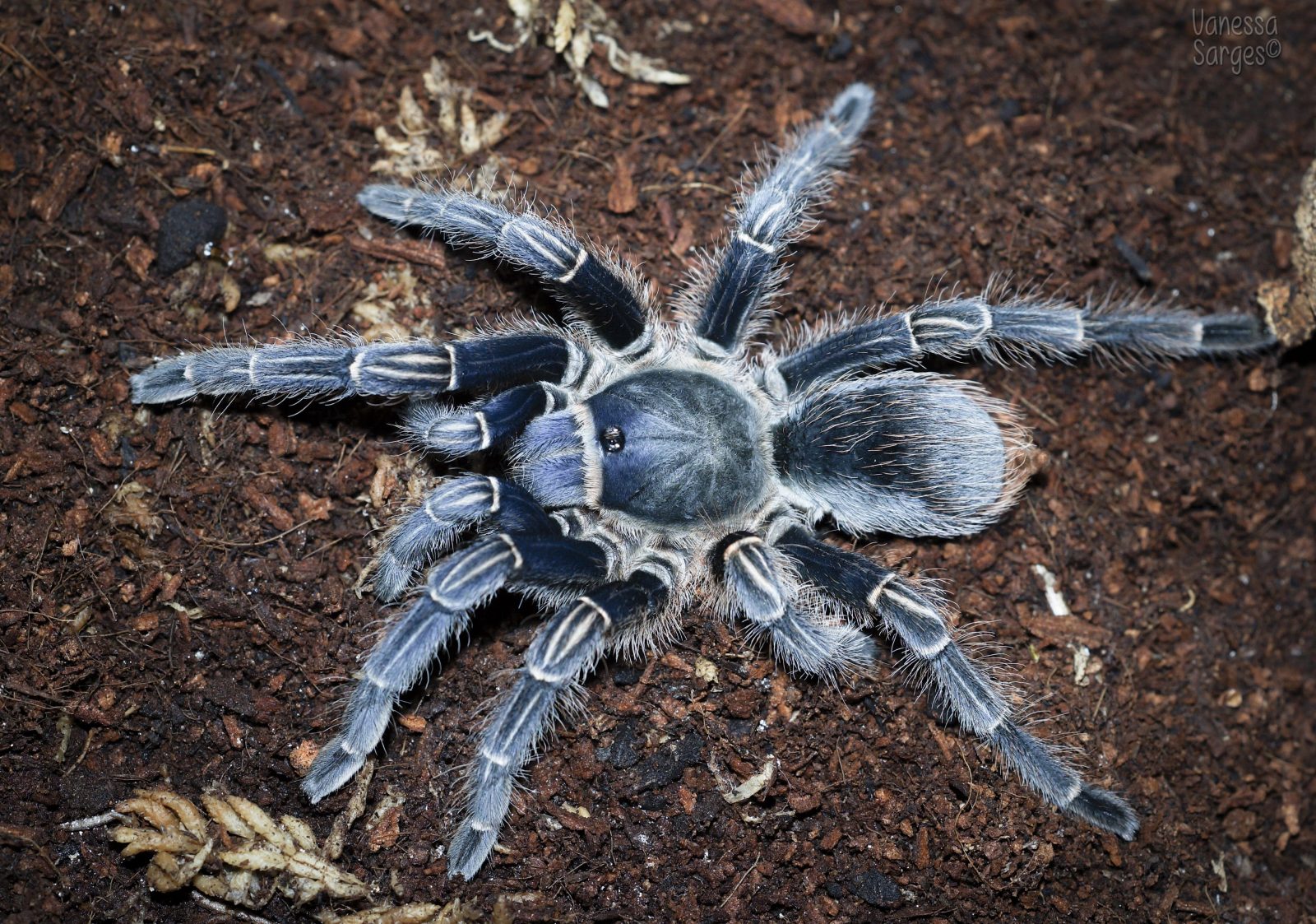
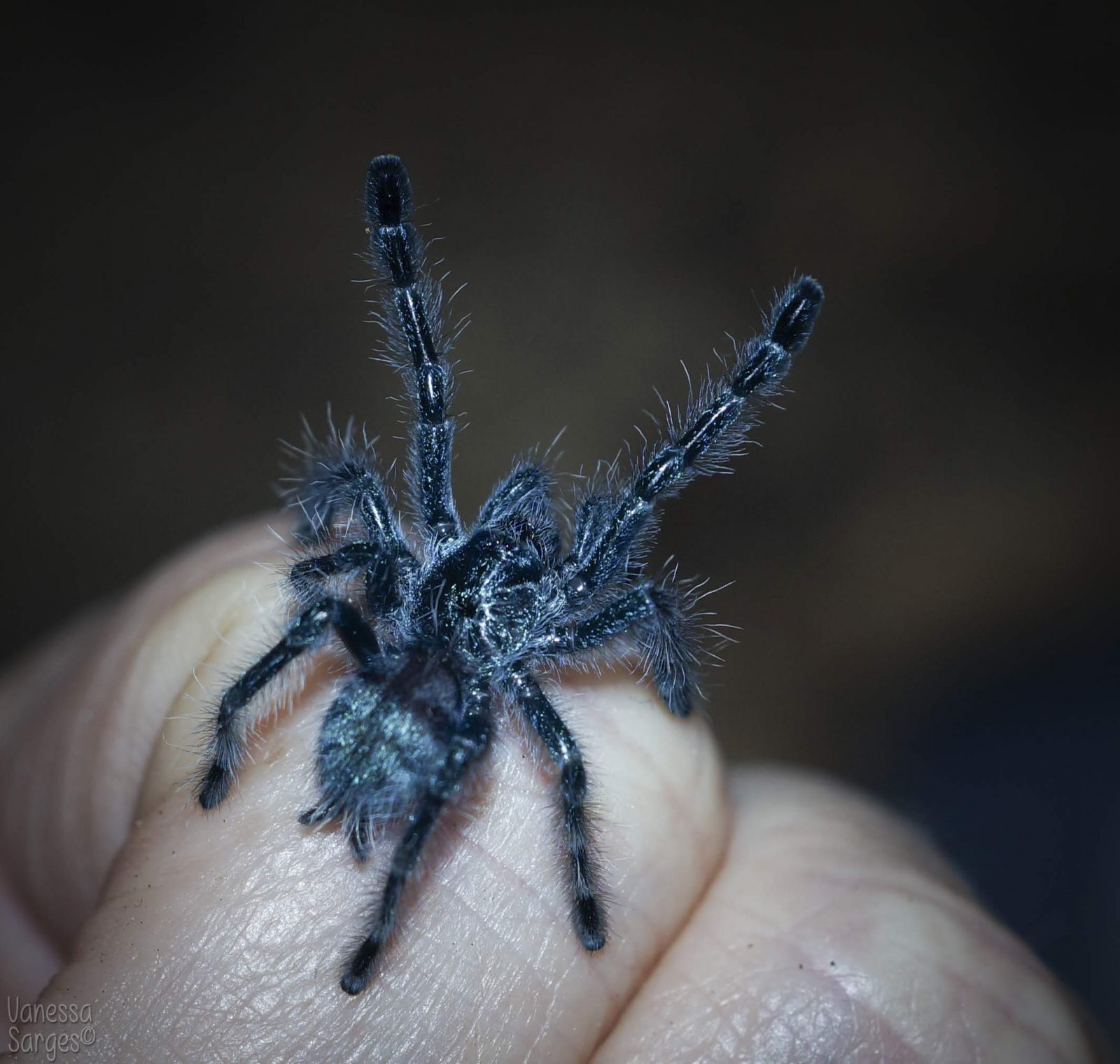
The Martinique Pinktoe (Caribena Versicolor) of the Caribbean Islands is calm and mild-mannered.
TARANTULAS AND THE ECOSYSTEM
There are good reasons to care about them. Scientists studying venom have learned more about pain and diseases like epilepsy. A tarantula doesn’t spin webs but they do produce silk, for their burrows and to protect their eggs. Other species use the tarantula’s excess silk for nests. Tarantulas help control agricultural pests such as crickets and beetles because they eat them. Currently, scientists are investigating silk for robotic muscle. Tarantulas deserve a place on our planet.


Powder Blue PinkToe (Blue Avicularia) and Greenbottle Blue (Chromatopelma cyaneopubescens)
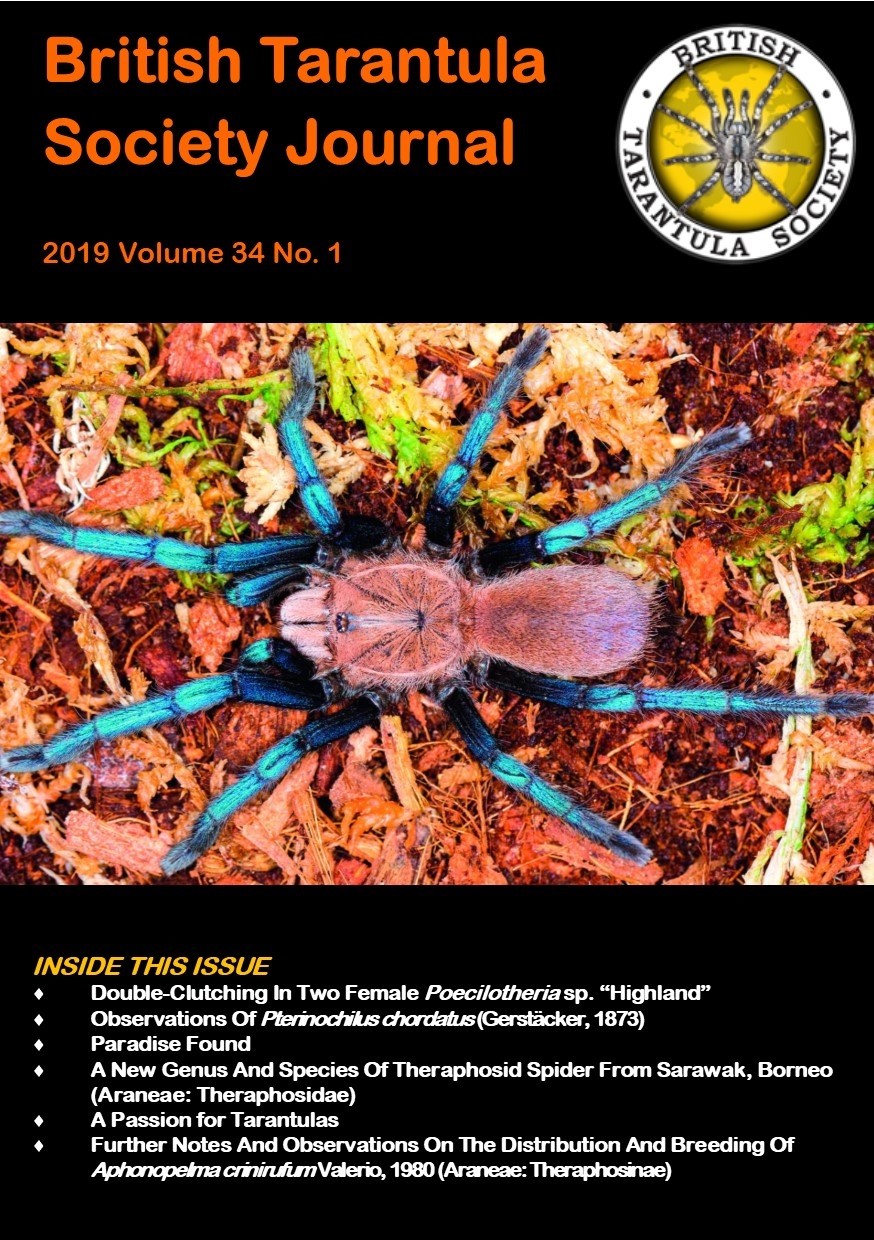

And Charlotte’s Web is one of my all-time favorite books! For more book recommendations with animal characters, here’s a post for you!
Birupes simoroxigorum photo courtesy Chien Lee www.chienclee.com
Monocentropus balfouri photo from Pete Kirk of the British Tarantula Society
Aphonopelma seemanni , Caribena versicolor, Aphonopelma seemanni and Chromatopelma cyaneopubescens photos courtesy Vanessa Sarges
Poecilotheria metallica photo courtesy of Rick C. West birdspiders.com
Before you go, please subscribe! I’ll send an email when I write a new post about some cool science innovation or species! Use the teal box on the right or get in touch with me on my contact page!
All rights reserved






I love this, Sue. You write so well about science. And I love spiders. I, too, have a spider catcher, but worry over the house spiders I put outside. I wonder how the little wispy ones who sit up in wall corners find anything small enough to eat in the house.
Donna
Thank, you Donna! Maybe the wispy ones eat fruit flies? It’s an interesting question!
I love blue as well and this is a gorgeous specimen. While in Costa Rica, a guide in the rainforest shone a flashlight in a hole which turned out to be a tarantula’s den!
That’s so cool!
This is rather icky, but here is a link to a video about the rising demand for tarantulas as snacks and how it’s causing a decline in the species.
https://www.youtube.com/watch?v=7p-xJmcIGfo
Ommg that is beautiful! The color blue changes everything. *.* I would still be scared but amazed at the same time if I see this spider! :0
I know exactly what you mean! There are purple species of tarantulas, too!
Not all spiders and tarantulas have 8 eyes.
Thanks so much for drawing this to my attention! I even had my article fact-checked by an arachnologist. Approximately 99% of spiders have eight eyes!
Recluse spiders have 6 eyes.
Interesting! Apparently they need their eyes because they can’t turn their heads (technically a cephalothorax) to see. Thanks so much for contributing to my post. I appreciate it.